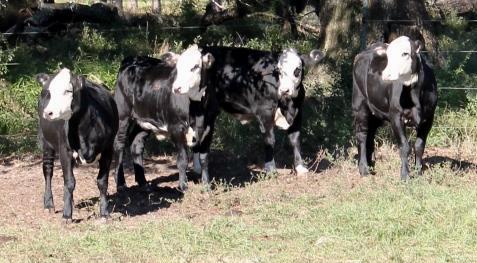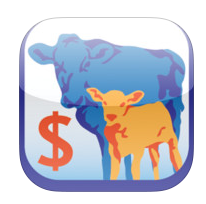
A defined breeding/calving season results in a more uniformed calf crop and more management options for both large and small herds.
There is a long and ever growing list of management strategies that have the potential to make cow calf operations more profitable. Many of these strategies relate in some way to more efficiently meeting the nutritional needs of the herd, the number one cost associated with maintaining a cow herd, or more effectively marketing the calf crop produced. Improvement in either of these areas has the potential to move an operations bottom line in a positive direction. That said, it is nearly impossible to make significant progress in either of these areas without first establishing a defined breeding season and in turn a defined calving season.
It can be argued that the implementation of a defined breeding/calving season (60 -90 days) has the potential to improve the profitability of a cow calf operation more than any other single management strategy; simply because this one decision makes it possible to begin implementing countless other changes that can further improve the profitability of the operation.
This potential for improvement is most evident among producers with smaller herds. In recent months I have encountered several producers with herds of 30 cows or less that appreciate the importance of establishing a defined breeding/calving season but the logistical hurdles have been too much for them to overcome. One simple question seems to be central to these logistical concerns:
Where do I put my bull?
If the entire operation is housed on one contiguous piece of property this can be a very real concern. If a “lonely” bull can see cows it is highly unlikely that conventional fencing will keep him away from the cows for an extended period. For this reason it is ideal to remove the bull from the area.
One possible way to handle this situation could be to partner with another producer. In this scenario the two produces would have separate, consecutive breeding/calving seasons. Essentially, the bull would breed cows at the first farm then go to the second farm to breed. After the predetermined breeding season is completed at the second farm the bull would return to the first farm. Before the bull returns, cows on at the first farm should be pregnancy tested, with open cows recorded for culling at calf weaning.. This scenario can work if two producers are willing and able to put together a plan and stick with it.

The schedule shows how it is possible for two small herds to utilize one bull; allowing for the implementation of a defined breeding/calving season. The schedule can be adjusted to begin with whatever month the producers desire.
Before entering into this type of arrangement be sure any herd health issues have been resolved and both herds are properly vaccinated. Vaccinations are very important because this system provides a prime opportunity for reproductive diseases like Campylobacter fetus (Vibrio) and Trichomonas fetus (Trich) to be spread. Additionally, be sure the bull has passed a breeding soundness exam prior to initial turnout. Total cow numbers and length of breeding season should also be looked at carefully. The number of cows a bull can service in a timely manner varies greatly with the age of the bull and the terrain he is asked to cover. In the case of two producers with fewer than 30 cows one mature bull should be up to the task assuming the terrain is not too harsh.
This “sharing” system works well when paired with a timed AI. In that scenario the producers are simply sharing a clean-up bull. The “sharing” system still allows for the bull to be removed at the end of the desired breeding season thereby creating the defined calving season that so many other management strategies are built around. The “sharing” system also allows for any cost associated with the bull to be spread between two operations.
Another option for creating a defined breeding/calving season on a small operation would be to transition completely to artificial insemination. UF/IFAS has developed the AI Cowculator, an app for your mobile device, to help determine the economic viability of using AI in your operation. This tool takes into account some of the economic benefits associated with the very short calving seasons resulting from the use of timed AI.
Regardless of how you go about it, even the smallest cow calf operations can be more effectively managed if a defined breeding/calving season is established. Transitioning from a year-round breeding to a defined-breeding season takes time, the following publication provides a guide to help plan the transition:
Converting the Beef Cow Herd to a Controlled Breeding Season
For more information about how you can improve the management of your cattle operation either through the implementation of a defined breeding/calving system or through some other means, contact your counties’ UF/IFAS Extension Office.
- Peanut Maturity Update – 10/9/25 - October 10, 2025
- Fall Can be a Great Time for Vegetation Management - October 3, 2025
- Peanut Maturity Update – 9/25/25 Edition - September 26, 2025

